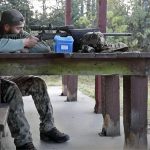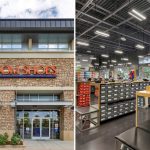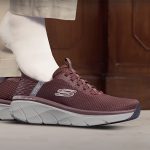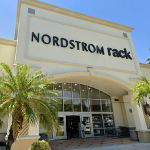The 2012 USA Pro Challenge, the toughest professional cycling race in the U.S., reached attendance numbers of more than one million over the course of seven days, Aug. 20-26, as fans turned out to watch the action-packed racing.
With a lead change nearly every day, one of the closest professional races in U.S. history came down to the final moments of the Individual Time Trial in Denver, with American Christian Vande Velde of Garmin-Sharp-Barracuda taking home the overall win. The race received unprecedented coverage highlighting the beautiful terrain of the state that totaled 31 hours on NBC and NBC Sports Network in the U.S. and was broadcast internationally to 175 countries and territories around the world.
“The crowds at the 2012 USA Pro Challenge were unlike anything I’ve ever seen outside of the big races in Europe,” said Shawn Hunter, CEO of the Pro Challenge. “Driving the course every day and seeing the enthusiasm and passion from the fans lining the streets really gave a sense of the growing support for the sport of cycling in the U.S. This race showcases Colorado and provides an incredible economic impact that will hopefully be here for years to come.”
Direct spending by traveling spectators brought a significant portion of the economic impact. Both those fans from outside the state and Coloradans traveling 50 miles or more to take in an event stage contributed $81.5 million on lodging, food, transportation and entertainment. The remaining economic impact comes in the form of team, staff, sponsor and vendor spending, employment created by the event, and the resulting tax effects of the race.
The 2012 race attracted spectators from at least 25 states across the country, with the top five after Colorado being Texas, Florida, New Mexico, Arizona and California. It also proved an exceptional following among Colorado residents, one of the significant contributing factors to the level of enthusiasm displayed by spectators along the entire 683-mile course
“The enthusiasm we saw from the fans at this year’s USA Pro Challenge was unprecedented,” said Steve Johnson, president and CEO of USA Cycling, the national governing body for bicycle racing in the United States. “One of our main goals is to grow competitive cycling in America and the USA Pro Challenge is doing just that. From the level of competition, to the huge crowds of fans lining the streets, to the overall organization, this race is exactly what we need in professional cycling.”
A draw for Colorado travel, 53 percent of spectators claimed they would not have traveled to Colorado at this time if it were not for the race. And with that, 75.8 percent stated they were very likely or likely to return to watch the race next year.
“The USA Pro Challenge is a huge community event that just continues to grow,” said Major Mark Savage of the Colorado State Patrol. “We are out there on the street with the fans ensuring a safe and fun event, and the respectful enthusiasm that continues to be displayed is amazing.”
Additional interesting analysis points include:
Spectators traveled in groups, with the average party consisting of three people.
While the median household income of Colorado residents is $56,456, race spectators averaged a household income of $110,000.
Spectators were satisfied with almost all parts of the race and the experience, with more than 86 percent saying they were very satisfied or satisfied with the race.
More than half of spectators in attendance reported they ride a bike for fitness, while roughly 21.9 percent responded they ride a bike occasionally or not at all.
This was an audience that appreciates the world class level of competition at the USA Pro Challenge and watches major cycling events on television, with 93.4 percent stating they watch part of the Tour de France.
The race drew spectators for various reasons with 64 percent wanting to witness the elite level of competition, 45 percent interested in the destination cities and 46 percent wanting to experience the start/finish festivals.
Spectators’ experiences with the USA Pro Challenge positively influenced their view of the State of Colorado, with 75 percent of out-of-state visitors stating they are more likely or much more likely to visit Colorado again based on their experience at the USA Pro Challenge.
The USA Pro Challenge commissioned IFM North America, a global sports research firm with more than 20 years of experience working with events around the world, to conduct a quantitative research study to measure the attendance and overall economic impact of the race.
“We conduct these types of studies on events around the world throughout the year,” said David Porthouse, vice president of IFM North America. “Working with our local partners and stakeholders, we implement best practices as we develop the data and models used to accurately and fairly evaluate the success of their events.”
IFM designed the study from the outset to address many of the contentious issues surrounding economic impact assessments. Key areas addressed included:
Substitution effects Since local fans will often spend similar amounts on local sports and other entertainment, IFM did not include the local fan spend in the economic impact report.
Time shifting Colorado is an attractive destination for travel, so IFM deliberately filtered respondents to ensure they were not capturing data from spectators already in Colorado, independent of the Pro Challenge, and also used elimination questions to remove those fans who intended to come to Colorado in the near future independent of the race
Sample sizes Large samples were taken at all stages, distributed across the race locations.
For seven consecutive days, the world’s top athletes raced through the majestic Colorado Rockies, reaching higher altitudes than they’ve ever had to endure as they ascended over three mountain passes, each exceeding 12,000 ft. in elevation. After attracting more than 1 million spectators in 2011, making it one of the largest cycling events in U.S. history, the USA Pro Challenge returned for a second year in 2012. Featuring a challenging, 683-mile course with more than 42,000 ft. of vertical climbing, the race highlighted the best of the best in professional cycling and some of America’s most beautiful scenery.
Referred to as “America’s Race,” the USA Pro Challenge took place August 20-26, 2012, a week proclaimed by Governor John Hickenlooper as “Colorado Cycling Holiday,” and traveled through 12 host cities from Durango to Denver. More information can be found online at www.ProChallenge.com and on Twitter at @USAProChallenge.
IFMNA is an international research consultancy that focuses on the value of sports properties and assets, and the economic activity surrounding sporting events, leagues and their communities. IFMNA is headquartered in St. Louis, MO. Its clients have included Major League Baseball, International Cycling Union, WTA, ATP, INDYCAR. IFMNA has a strong background in professional cycling, having experience with tracking cycling audiences and sponsorship valuations and impacts around the globe and performing similar economic impact work for more 10 stage races, including the Tour of Missouri and USA Pro Challenge. In addition, IFMNA has the privilege of working with many top cycling teams BMC Racing Team, Garmin-Sharp-Barracuda, Team Type 1-Sanofi and, previously, Team Highroad.














